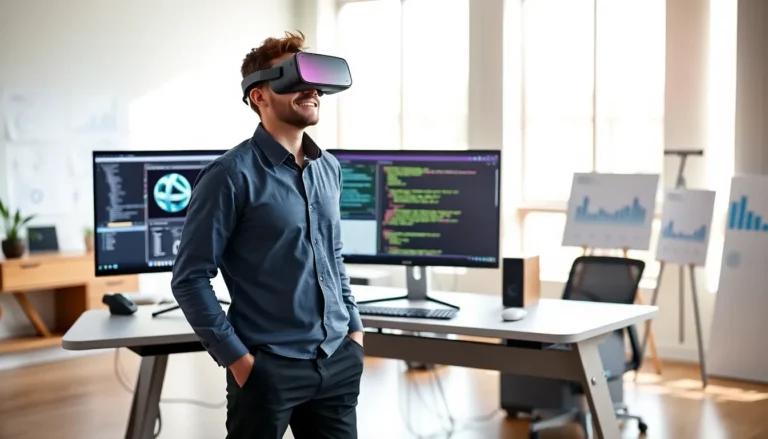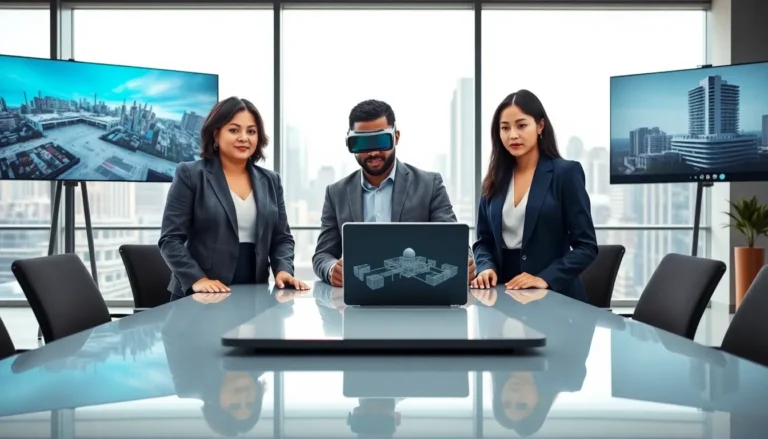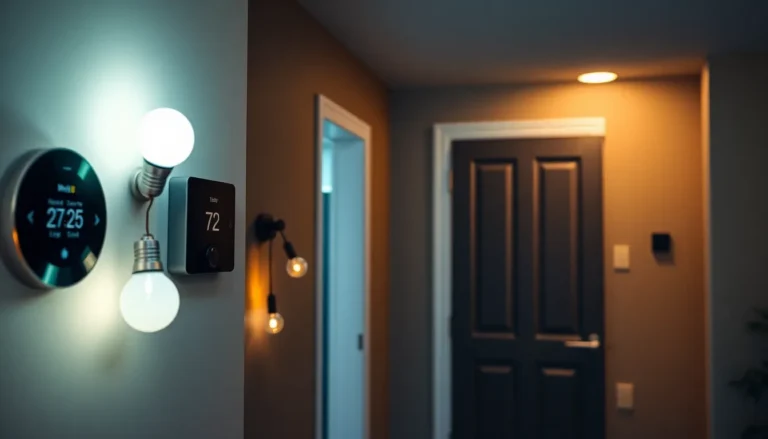Imagine a world where your fridge knows when you’re out of milk, your thermostat adjusts automatically based on the weather, and your car tells you when it’s time for an oil change, all without lifting a finger. Welcome to the Internet of Things (IoT) revolution. This fascinating concept is transforming our daily lives and is powered by robust software development. In this text, we’ll investigate into the intricacies of IoT software development, navigating through its architecture, challenges, best practices, and exciting trends on the horizon. Get ready to discover how this technological marvel is reshaping the world as we know it.
Table of Contents
ToggleUnderstanding The Internet Of Things (IoT)

The Internet of Things, or IoT, refers to the network of interconnected devices that communicate and share data with one another. It encompasses everything from smart appliances and wearable devices to industrial equipment and sensors. These IoT devices collect vital information and leverage cloud computing to provide real-time insights.
At its core, the IoT framework enables seamless interaction between the physical and digital realms. Take smart homes, for instance, where devices work in harmony to enhance living conditions. Imagine a scenario in which your lights dim automatically as the sun sets or your coffee machine brews your morning coffee as soon as your alarm goes off. The convenience and efficiency that IoT brings are simply undeniable.
As technology advances, the scope of IoT continues to expand, affecting various industries, including healthcare, agriculture, transportation, and manufacturing. By harnessing the power of data, organizations can make smarter decisions, improve operational efficiency, and create innovative solutions that address real-world problems.
Key Components of IoT Architecture
Understanding the architecture of IoT is critical for effective software development. IoT architecture typically comprises four major components:
- Devices/Sensors: These are the physical objects equipped with sensors, cameras, and various other technologies that gather data from the environment. They act as the frontline troops in the IoT battlefield, collecting essential information to send back to the cloud.
- Connectivity: This component involves the communication protocols and network infrastructure that allow devices to connect and share data. Options range from Wi-Fi and Bluetooth to cellular networks and satellite communications. The choice primarily depends on the specific use case and environment.
- Data Processing: Once the data is collected, it needs to be processed using sophisticated algorithms. This processing can happen either on the device itself (edge computing) or in the cloud, determining the response or action needed.
- User Interface: This is how users interact with the IoT system. It includes mobile applications, web dashboards, or voice-activated assistants that allow users to monitor and control their devices conveniently.
So, creating a seamless connection among these components is vital to ensuring that IoT solutions function efficiently.
Software Development Approaches for IoT
When it comes to software development for IoT, several approaches can be adopted, each tailored to specific needs:
- Agile Development: This approach promotes flexibility and customer-centricity. Developers can rapidly iterate changes based on feedback, making it ideal for IoT projects that require ongoing adjustments.
- DevOps: Combining development and operations, DevOps fosters collaboration between teams, shortening the time required to deliver new features and updates. This approach enables a more streamlined development process and enhances deployment efficiency.
- Microservices Architecture: Instead of relying on a single monolithic application, microservices structure an application as a suite of small services. Each service runs independently, providing scalability and easier maintenance, particularly beneficial for complex IoT solutions.
- Cloud Computing: Leveraging cloud services ensures that the backend for IoT applications can scale easily. By utilizing cloud storage and processing power, developers can handle vast amounts of data generated by IoT devices.
These approaches, when applied mindfully, can lead to robust IoT solutions that satisfy user expectations.
Challenges in IoT Software Development
While the potential of IoT is immense, several challenges can hinder smooth software development:
- Security Risks: With countless devices connected to the internet, the risk of cyberattacks increases significantly. Ensuring data encryption, secure authentication, and regular updates is imperative to safeguard user data and device integrity.
- Interoperability Issues: The diversity of devices and communication protocols creates compatibility challenges. Ensuring seamless communication between devices from different manufacturers can be difficult, complicating integration efforts.
- Data Management: The sheer volume of data generated by IoT devices can be overwhelming. Efficiently managing, analyzing, and deriving actionable insights from this data requires sophisticated strategies and robust analytics tools.
- Scalability: As more IoT devices are introduced, scaling solutions to accommodate growth becomes crucial. Developers must design applications that can adapt to increasing loads without compromising performance.
Addressing these challenges requires a comprehensive strategy and an informed development team equipped to tackle the complexities of IoT.
Best Practices for IoT Software Development
To maximize success in IoT software development, consider these best practices:
- Prioritize Security: Carry out rigorous security measures from the outset, including end-to-end encryption, regular updates, and vulnerability assessments. Protecting user data should be a top priority.
- Adopt a User-Centric Design: Whether it’s a mobile app or a web interface, design with the end-user in mind. Intuitive navigation and user-friendly experiences enhance interaction with the IoT system.
- Leverage Edge Computing: Process data closer to the source through edge computing to reduce latency, conserve bandwidth, and enhance real-time response capabilities.
- Conduct Thorough Testing: Rigorous testing, including functional, performance, and security tests, ensures that the IoT solution functions correctly and can withstand various challenges.
- Stay Updated on Regulations: Being aware of and complying with industry regulations and standards helps prevent legal complications and builds user trust.
By following these best practices, developers can create robust, secure, and user-friendly IoT applications.
Future Trends in IoT Software Development
The future of IoT software development is destined to be exhilarating, with several pivotal trends emerging:
- Artificial Intelligence (AI) Integration: AI will play a transformative role, powering predictive analytics and enabling devices to learn from user behavior. This will lead to smarter, more responsive applications.
- 5G Implementation: The arrival of 5G technology promises better connectivity, higher speeds, and lower latency. This leap will foster increased adoption of IoT devices across various applications, from smart cities to autonomous vehicles.
- Increased Focus on Sustainability: As awareness of environmental issues rises, IoT applications aimed at sustainability, such as smart energy management systems, will gain traction, helping to reduce waste and optimize resources.
- Enhanced Interoperability Standards: As the industry matures, establishing common standards to ensure device interoperability will become critical. Standardization will foster better cooperation among manufacturers and enhance user experience.
Summarizing, the IoT landscape is evolving rapidly, and staying ahead of these trends will be essential for developers and businesses alike.










